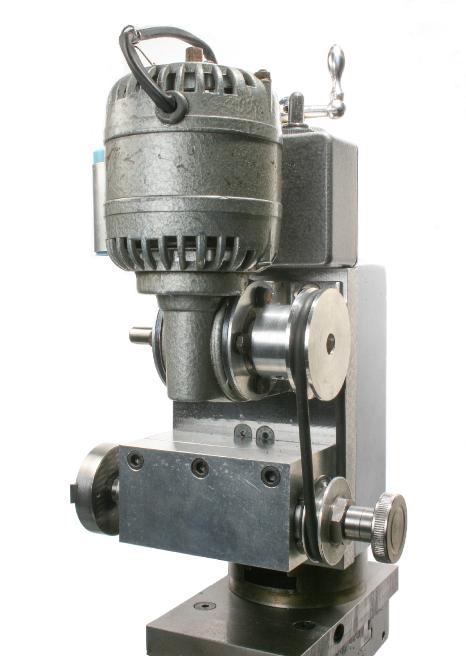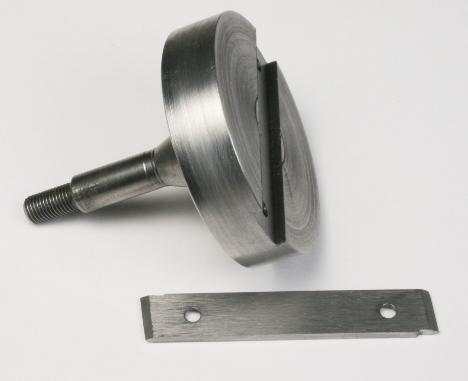Chapter 10

Just Riding Along
In a major, but entirely unintentional gaffe, our valued contributors who supplied the excellent photos for Figs 10.7, 10.8 and 10.9 (page 108 of the book) have not been credited in the photo captions.
Take a bow, please Just Riding Along
manufacturers and purveyors of excellent custom bicycle wheels.
My apologies.

Thread Mill

The thread mill shown in Chapter 10 and on the Frontispiece (the first photo at the very front of the book, opposite the title page) consists of:
(A) a Parvalux motor with integral gearbox. This provides a slow speed drive. With the pulleys, the speed of the spindle of the mill is around 300rpm, based on the peripheral speed of the cutters.
(B) a Quorn tool and cutter spindle in a clamping block.
(C) a cutter block holding two cutters with 60 degree vee tools and curved ends to provide clearance.
(D) a drawbar to hold the cutter head in place.
(E) a Boxford vertical slide. This provides a rotatable mount for the mill, allowing the whole mill assembly to be rotated so that the cutter head can be inclined at the thread angle. The whole slide sits on a rotating base, so the whole mill and vertical slide can be rotated about a vertical axis. This is normally set to zero rotation, so that the cutter always acts at right angles to the axis of the thread.
(F) a mounting plate designed to be attached to the lathe cross-slide. The end of the cross-slide is just visible at the rear right lower corner of the photo.
(G) a drive belt made form Whiston's plastic belting. This is cut to length and joined by heating the cut ends and pressing them together. It's utter rubbish, and is very difficult to join. This would be better as a poly-vee belt or a conventional vee belt or a toothed belt.
This is a useful tool, especially becasue it can cut a thread from a shoulder outwards, or up to a shoulder.
As noted in the book, the cross-slide movement is set up as for conventional screw cutting, but the leadscrew-controlled motion should be much slower, and the lathe is best turned slowly using a mandrel handle. The mill slowly flycutes the thread. With a more powerful motor it might be possible to use a slow screwcutting power feed, but this small motor won't stand the strain.
This is a useful tool for the occasional awkward job.

The cutter head has a shaft with a taper to match the Quorn spindle internal taper, and a thread to suit the drawbar. The cutter is double-ended and is made from gauge plate whcih was shaped then hardened and tempered.
The clearance is based on the radius of the cutter.
The cutter is secured in the slot by two screws with heads which are flush with the surface of the cutter, to avoid marking a shoulder.
© Copyright Marcus Bowman 2015 et seq | All Rights Reserved